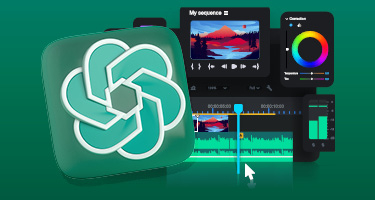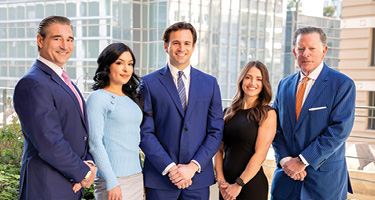Insurance Coverage Tiers and Driver Status Classification
The legal framework governing rideshare accidents depends entirely on the driver's operational status at the moment of collision. Texas Transportation Network Company regulations establish three distinct phases of coverage that determine available compensation sources. Period One occurs when drivers have the app installed but remain offline, relying solely on personal automobile insurance. Period Two begins when drivers activate the app and become available for ride requests but have not yet accepted a passenger. Period Three encompasses active ride periods from passenger pickup through trip completion and passenger departure.
Personal automobile insurance policies contain explicit exclusions for commercial vehicle operations, creating significant coverage gaps during transitional periods. Most standard policies deny claims when vehicles are used for compensation, regardless of whether the driver was actively transporting passengers. Insurance companies exploit these exclusions aggressively, often denying coverage entirely when they discover any rideshare activity.
Rideshare platforms maintain contingent liability policies designed to provide coverage when personal insurance proves insufficient or unavailable. However, accessing this coverage requires navigating complex policy language and overcoming carrier resistance. The platforms' insurance activates only after personal coverage denial or exhaustion, creating procedural hurdles that can delay compensation for months.
Digital records containing GPS data, app status logs, and timestamp information become crucial evidence in determining coverage applicability. These electronic records disappear quickly as platforms routinely purge data to manage storage costs. A qualified Car Accident Attorney must act immediately to preserve this evidence through formal discovery requests and litigation holds before permanent deletion occurs.
The complexity of rideshare insurance structures requires immediate legal intervention to identify all potential coverage sources and prevent evidence destruction. Victims who attempt to navigate these systems independently often discover too late that critical evidence has vanished and coverage opportunities have expired.
Commercial Policy Exclusions and Coverage Gap Analysis
Texas requires Transportation Network Companies to maintain minimum insurance coverage of $1 million for bodily injury and property damage during active ride periods. However, this requirement provides only baseline protection, and coverage amounts may prove insufficient for catastrophic injuries requiring long-term medical care and rehabilitation services.
During Period Two operations, when drivers await ride requests, platforms provide contingent coverage of $50,000 per person and $100,000 per accident for bodily injury, plus $25,000 for property damage. This limited coverage often fails to compensate victims adequately for serious injuries, particularly when multiple parties suffer harm in single accidents.
The most problematic coverage gaps occur during status transitions when drivers toggle between app phases. Modern rideshare applications experience technical glitches, delayed status updates, and connectivity issues that create ambiguous coverage periods. Insurance companies capitalize on these uncertainties to dispute claims and minimize payouts through aggressive litigation tactics.
Uninsured and underinsured motorist coverage through victims' own policies may provide additional compensation sources when rideshare coverage proves inadequate. However, these policies contain their own exclusions and limitations that require careful legal analysis to maximize recovery potential. Stacking provisions, when available, can multiply coverage limits across multiple vehicles owned by victims and their family members.
An experienced Vehicle Accident Attorney must analyze all policy layers, including excess and umbrella coverage maintained by drivers, platforms, and third parties. Commercial auto policies, general liability coverage, and professional liability insurance may all contribute to comprehensive settlement packages when properly identified and pursued through strategic litigation.
Spinal Cord Trauma and Neurological Injury Documentation
Rideshare accidents frequently produce severe spinal injuries due to the unpredictable nature of passenger pickup and dropoff maneuvers. Drivers often stop suddenly or make unexpected turns to reach designated pickup locations, creating rear-end collision scenarios that generate significant cervical and lumbar trauma. The confined space of rideshare vehicles can exacerbate injury severity as passengers lack proper restraint positioning and protective equipment.
Cervical spine injuries from rideshare accidents typically involve complex soft tissue damage including ligament tears, muscle strains, and disc herniation. The whiplash mechanism creates hyperextension and hyperflexion forces that damage multiple anatomical structures simultaneously. Victims often experience delayed symptom onset as inflammation develops and nerve compression increases over several days following the initial trauma.
Thoracic and lumbar spine injuries require comprehensive evaluation through advanced imaging studies including MRI and CT scans to identify disc displacement, nerve root compression, and vertebral fractures. Neurological testing through electromyography and nerve conduction studies can detect subtle nerve damage that affects long-term function and recovery potential.
Treatment protocols for rideshare-related spinal injuries often require multidisciplinary approaches involving orthopedic surgeons, neurosurgeons, pain management specialists, and rehabilitation medicine physicians. Conservative treatment through physical therapy and pharmaceutical management may prove insufficient, necessitating interventional procedures such as epidural steroid injections, radiofrequency ablation, or surgical intervention.
A qualified Neck Injury Lawyer coordinates medical evaluations to establish comprehensive documentation of injury severity and treatment necessity. Expert medical testimony becomes essential to demonstrate the causal relationship between the rideshare accident and ongoing symptoms, particularly when insurance companies challenge the extent of claimed injuries.
The economic impact of spinal injuries extends beyond immediate medical expenses to include lost wages, diminished earning capacity, and lifetime care needs. Vocational rehabilitation experts assess functional limitations and retraining requirements, while life care planners project future medical costs and assistive device needs.
Digital Evidence Preservation and Technology-Based Liability
Rideshare platforms maintain extensive electronic data that proves crucial to liability determination and damage calculation. GPS tracking records document vehicle location, speed, and direction at the time of collision. App status logs provide definitive proof of driver operational phase and corresponding insurance coverage. Message histories between drivers and passengers can reveal distraction factors that contributed to accident causation.
The ephemeral nature of digital evidence requires immediate legal action to prevent permanent data loss. Rideshare companies routinely delete records after brief retention periods to minimize storage costs and potential liability exposure. Court orders and preservation notices must be served promptly to prevent evidence destruction and ensure comprehensive case development.
Navigation system failures and algorithmic routing decisions can contribute to accident causation when platforms direct drivers through dangerous areas or provide inaccurate directions. Traffic pattern analysis and route optimization software may prioritize speed over safety, creating liability exposure for the technology companies that design and implement these systems.
Driver distraction from rideshare applications presents another source of potential liability. Push notifications, ride requests, and passenger communications can divert attention from safe driving practices. App interface design that requires excessive visual attention or complex manipulation while driving may constitute negligent product design subject to legal challenge.
Expert testimony from software engineers, traffic safety specialists, and human factors experts becomes necessary to establish technology-based liability claims. These professionals analyze system design, user interface requirements, and distraction potential to demonstrate how technological factors contributed to accident occurrence.
The emergence of artificial intelligence and machine learning algorithms in rideshare operations creates new liability theories as automated systems make decisions affecting driver behavior and passenger safety. Legal precedents continue evolving as courts address these novel technology-related claims.
Multi-Party Litigation Coordination and Strategic Settlement
Rideshare accident litigation typically involves numerous defendants with potentially conflicting interests and separate legal representation. The rideshare driver maintains personal liability for negligent operation, while the platform company faces potential vicarious liability and negligent supervision claims. Other motorists involved in the collision carry independent responsibility, and government entities may bear liability for roadway design or maintenance deficiencies.
Vehicle manufacturers can face product liability claims when mechanical failures contribute to accident causation. Defective brakes, steering systems, or safety equipment may warrant separate legal action against automotive companies and their component suppliers. These claims require distinct legal theories and expert testimony to establish manufacturing defects or design inadequacies.
Insurance coverage disputes between multiple carriers create additional complexity requiring sophisticated coordination and strategic planning. Personal auto insurers, commercial rideshare policies, and excess coverage providers often dispute primary coverage responsibility, creating delays that can prejudice victim recovery. Interpleader actions may become necessary to resolve coverage conflicts and ensure prompt compensation.
Experienced Personal Injury Attorneys manage multi-defendant litigation through coordinated discovery, joint expert depositions, and strategic settlement negotiations that maximize recovery from all available sources. Settlement timing becomes crucial as early agreements with some defendants can provide immediate compensation while preserving claims against remaining parties.
Damage calculations in rideshare cases must account for economic losses including medical expenses, lost wages, and diminished earning capacity. Non-economic damages for pain, suffering, mental anguish, and loss of life enjoyment require compelling presentation through victim testimony, family observations, and expert psychological evaluation.
Comprehensive Case Development and Recovery Maximization
Each personal injury case involving rideshare accidents requires individualized analysis considering the unique circumstances of the collision, severity of injuries sustained, and long-term recovery prognosis. Successful outcomes depend on thorough investigation, comprehensive medical documentation, and strategic legal positioning that addresses all potential liability sources.
Vocational rehabilitation analysis becomes essential when injuries prevent return to previous employment or limit career advancement opportunities. Economic experts project lifetime earning losses and quantify the financial impact of reduced work capacity. These projections must account for inflation, career progression, and benefits lost due to employment disruption.
Psychological trauma from rideshare accidents often exceeds the duration and severity of physical injuries. Post-traumatic stress disorder, anxiety disorders, and phobic responses to vehicle travel can persist for years after physical recovery concludes. Mental health treatment costs and lost productivity from psychological symptoms warrant separate damage categories requiring expert testimony and comprehensive documentation.
Family members suffer secondary damages when rideshare accidents cause severe injuries to loved ones. Loss of consortium claims compensate spouses for diminished relationships, while children may recover for loss of parental guidance and support. These derivative claims require careful presentation to avoid duplication of primary victim damages.
The statute of limitations in Texas provides a two-year window for filing personal injury claims, making prompt legal action essential to preserve all available remedies. Discovery deadlines, expert disclosure requirements, and trial scheduling considerations demand early case development and strategic planning.
Through comprehensive legal representation that addresses insurance coverage disputes, liability determination, medical documentation, and damage quantification, rideshare accident victims can achieve maximum compensation and hold all responsible parties accountable for their negligent conduct.
This content is for informational purposes only and does not constitute legal advice. No attorney-client relationship is formed by reading this article. Laws may vary by jurisdiction. Please consult a qualified attorney licensed in your state for legal guidance specific to your situation.















